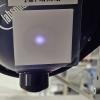LHO EndX measurement made today.
python3 generate_measurement_data.py --WS "PS4" --date "2024-09-23"
Reading in config file from python file in scripts
../../../Common/O4PSparams.yaml
PS4 rho, kappa, u_rel on 2024-09-23 corrected to ES temperature 299.3 K :
-4.711436365635769 -0.0002694340454223 4.121866697713714e-05
Copying the scripts into tD directory...
Connected to nds.ligo-wa.caltech.edu
martel run
reading data at start_time: 1416675755
reading data at start_time: 1416676330
reading data at start_time: 1416676692
reading data at start_time: 1416677299
reading data at start_time: 1416677800
reading data at start_time: 1416678168
reading data at start_time: 1416678360
reading data at start_time: 1416679388
reading data at start_time: 1416679723
Ratios: -0.46161620922202573 -0.46631546727413287
writing nds2 data to files
finishing writing
Background Values:
bg1 = 9.175134; Background of TX when WS is at TX
bg2 = 5.161980; Background of WS when WS is at TX
bg3 = 9.165405; Background of TX when WS is at RX
bg4 = 5.151518; Background of WS when WS is at RX
bg5 = 9.191307; Background of TX
bg6 = 0.664785; Background of RX
The uncertainty reported below are Relative Standard Deviation in percent
Intermediate Ratios
RatioWS_TX_it = -0.461616;
RatioWS_TX_ot = -0.466315;
RatioWS_TX_ir = -0.456051;
RatioWS_TX_or = -0.461524;
RatioWS_TX_it_unc = 0.086881;
RatioWS_TX_ot_unc = 0.091151;
RatioWS_TX_ir_unc = 0.097094;
RatioWS_TX_or_unc = 0.089816;
Optical Efficiency
OE_Inner_beam = 0.988013;
OE_Outer_beam = 0.990086;
Weighted_Optical_Efficiency = 0.989049;
OE_Inner_beam_unc = 0.060350;
OE_Outer_beam_unc = 0.060428;
Weighted_Optical_Efficiency_unc = 0.085403;
Martel Voltage fit:
Gradient = 1636.718975;
Intercept = 0.130679;
Power Imbalance = 0.989923;
Endstation Power sensors to WS ratios::
Ratio_WS_TX = -1.077666;
Ratio_WS_RX = -1.392000;
Ratio_WS_TX_unc = 0.054228;
Ratio_WS_RX_unc = 0.043548;
=============================================================
============= Values for Force Coefficients =================
=============================================================
Key Pcal Values :
GS = -5.135100; Gold Standard Value in (V/W)
WS = -4.711436; Working Standard Value
costheta = 0.988362; Angle of incidence
c = 299792458.000000; Speed of Light
End Station Values :
TXWS = -1.077666; Tx to WS Rel responsivity (V/V)
sigma_TXWS = 0.000584; Uncertainity of Tx to WS Rel responsivity (V/V)
RXWS = -1.392000; Rx to WS Rel responsivity (V/V)
sigma_RXWS = 0.000606; Uncertainity of Rx to WS Rel responsivity (V/V)
e = 0.989049; Optical Efficiency
sigma_e = 0.000845; Uncertainity in Optical Efficiency
Martel Voltage fit :
Martel_gradient = 1636.718975; Martel to output channel (C/V)
Martel_intercept = 0.130679; Intercept of fit of Martel to output (C/V)
Power Loss Apportion :
beta = 0.998895; Ratio between input and output (Beta)
E_T = 0.993960; TX Optical efficiency
sigma_E_T = 0.000424; Uncertainity in TX Optical efficiency
E_R = 0.995060; RX Optical Efficiency
sigma_E_R = 0.000425; Uncertainity in RX Optical efficiency
Force Coefficients :
FC_TxPD = 7.886467e-13; TxPD Force Coefficient
FC_RxPD = 6.173183e-13; RxPD Force Coefficient
sigma_FC_TxPD = 5.464959e-16; TxPD Force Coefficient
sigma_FC_RxPD = 3.784130e-16; RxPD Force Coefficient
data written to ../../measurements/LHO_EndX/tD20241126/
Beam Spot
T1500062 procedure measurement and log
Martel
WS @ TX
WS @ RX
WS @ RX Both_BEAMS
LHO EndX PD report
Git Link: https://git.ligo.org/Calibration/pcal/-/tree/master/O4/ES/measurements/LHO_EndX/tD20241126?ref_type=heads
Lab measurements:
NOTES:
PS4 PS5 measurement used for the above measurement were made on 2024-09-23.
The Measurements done in the PCAL LAB today 2024-11-26 were significantly different from the last set of measurements. Due to a drop in the voltage reported in the following plots.
https://git.ligo.org/Calibration/pcal/-/tree/master/O4/lab/measurements/t20241126_144208_PS4_PS5_FB?ref_type=heads
https://git.ligo.org/Calibration/pcal/-/tree/master/O4/lab/measurements/t20241126_160713_PS4_PS5_BF?ref_type=heads
And I will need review these further before re-running the ES data with these newest measurements.
This maybe due to some changes in the lab. More vetting time is needed.



















